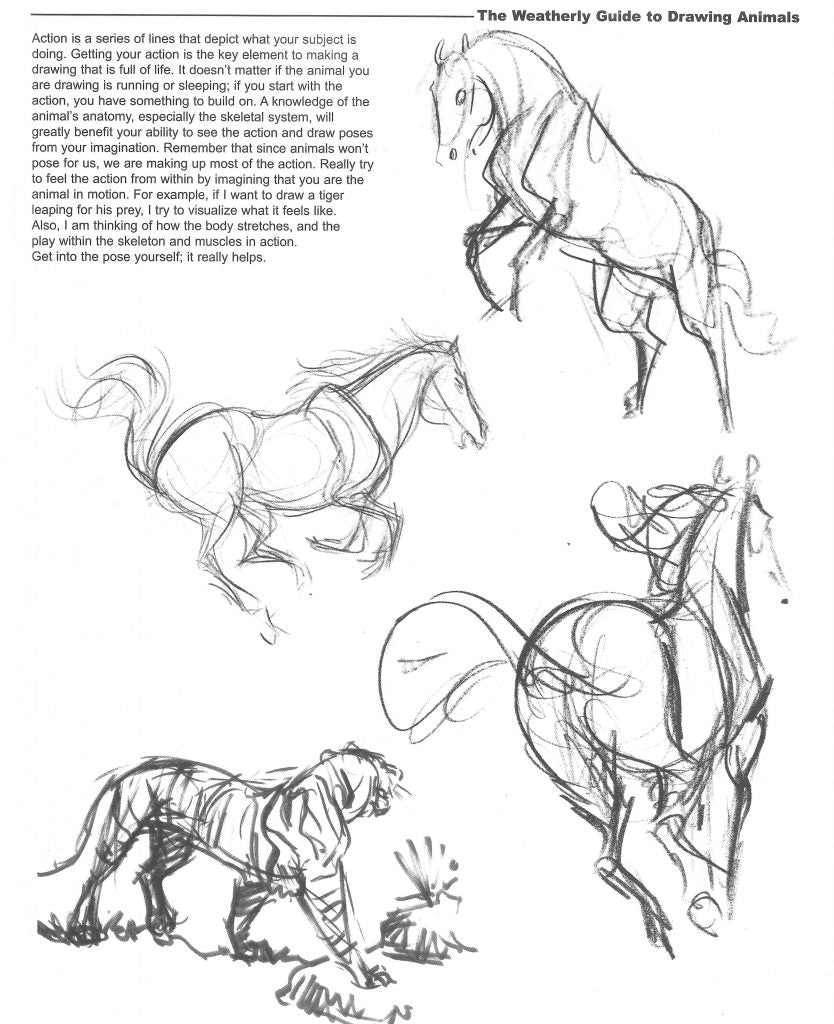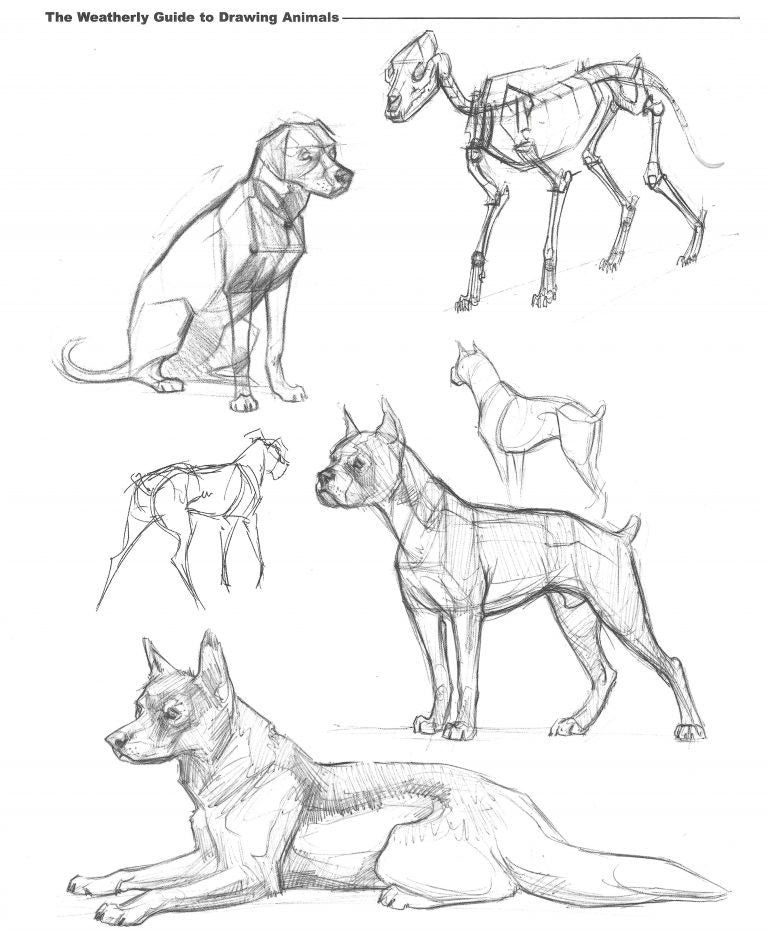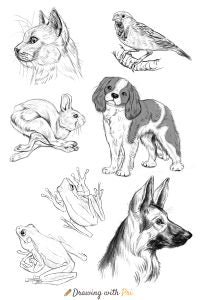How To Draw Animals – Book Review On Drawing Animals
Do you want to learn how to draw animals? This week I am giving you a sneak peek into a wonderful book that will teach you the entire process that goes into creating a realistic animal drawing.
We have co-existed with and depended on animals since the start of humanity. The earliest cave paintings have fascinating depictions of animals and people. These drawings almost look animated and full of life. There is an intimacy with the natural world that has been lost in the last few centuries.
Animal drawing can be a challenging subject to tackle. They are fun to draw and they have fascinating personalities. These creatures never sit still unless they are sleeping, making them a difficult subject to master.
This week I am taking you on a tour of one of my favourite books on learning how to draw animals. The Weatherly Guide to Drawing Animals Book.
About the artist
Joe Weatherly, known for the drama of his works, is an artist from Southern California. His animal drawings are bold and almost alive. Its rich style brings to life nature in all its captivating beauty. Joe is very passionate about conserving the natural world and his drawings and paintings aim to promote the survival of these beautiful creatures and the world we live in.

Joe has been teaching how to draw animals for 20 years because of a passion for the subject. His book “The Weatherly Guide to Drawing Animals”, led to him being hired by colleges and institutions to teach. He holds workshops to teach people how he draws.
Joe’s paintings and drawings hang in private collections in Europe and North America. Among his clients are Dreamworks Feature Animation and Universal Studios.
Joe’s advice to his students as said in an interview is to:
- Gain a large amount of information on a subject that you are fascinated about to learn further about it.
- Get out of the studio to develop unique ideas on the subject you are working on understanding.
- Study with a master or a specific artist you admire to learn how they work and what they do.
The Weatherly Guide to Drawing Animals
At first glance, the book has an impressive collection of over 900 images. In the table of contents page, you will see that there is enough information to have you returning to the book for years. There is plenty to examine for beginners and advanced artists.
The drawings in this book are so lively and animated, they truly cover the personality of each animal. For those of us who use photographs as references, Joe encourages us to use them as a tool and to study from nature as often as possible. He also insists that as artists we need to keep a sketchbook and draw regularly. If there are no animals, sketch people or landscapes, they are organic forms after all.

This book focuses on Action, Construction and Anatomy. As Joe coins it, the “Big 3”. Without these fundamentals, a drawing will be stiff and show a lack of understanding of the basic principles that make for good draftsmanship.
Whether you are a beginner or a professional, as artists, we know that you can never have enough of going back to the basics.
Action
Joe encourages artists to focus on the fluid, dynamic movement of the animals through quick sketches that capture the essence of an animal. If you spend too much time rendering your artwork, the action and expression of a drawing can become stiff. By understanding the action you can capture the essence of the animal and build the form on top of it.

This book emphasises gesture, action and rhythm so that you can get lively drawings that leap out at your audience.
Construction
The next step to drawing animals is to build on top of the action using boxes, spheres, cones and cylinders: using forms as a construction method to build the action drawing to create a believable drawing. This book teaches you how to break down the forms that you see and turn them into a convincing animal drawing. This method helps build a mental library so that you can draw from your imagination or memory.

Anatomy
Understanding the basics of anatomy gives your drawings dimension and credibility. Like many of the great masters such as Michelangelo, Rubens and Da Vinci this book advocates drawing to understand the landmarks on the body that are formed by the skull, bones and muscle. There are skeletal studies to guide you to gain the knowledge that is necessary to create a convincing animal drawing. Once you understand some of the basic anatomy principles you will start to see how similar most animal structures can be.

The book also gives a brief introduction to the comparative anatomy of humans and animals. The muscles and bones in most animals are sized and shaped differently to accommodate for specific functions such as crawling, crouching, feeding, hunting etc. This book gives you a good introduction to animal anatomy, however, if you need more detailed instruction I would suggest other books.

An overemphasis on one in this triage will make your drawings stiff. As artists, you don’t want to create mannequins or copy photographs. The book stresses working on the whole rather than focusing on parts.
Once we understand the fundamentals we can break the rules for artistic expression and freedom.
Some of my favourite animal study pages
Elephant

Bears

Dogs

Cows

Horses

If you want to see what other animals are covered, you should purchase the book of course.
My key takeaway points
One of my favourite parts of this book is how attitude and expression are emphasised throughout the book. All the animals have attitudes throughout their whole body, which seems to be the focus of this book.

The language used throughout the book is simple and easy to grasp. So if English is your second language, you should still be able to get plenty out of it. Just studying the images alone will give you plenty to learn from.
This book is packed with information. I think I will be returning to it for years to come. I would highly recommend it for all artists, especially those who want to learn how to draw animals.
My only concern with the book is that many of the drawings are very loose. As a beginner, you might struggle to study directly from some of the illustrations. You will need photos, videos or live animals to supplement some sketches to understand what you see. However, I think that is exactly what Joe wants you to do.

If you think you love this book you might also enjoy some other books of the artist.
Joe Weatherly has written several books that include:
- The Weatherly Guide to Drawing Animals
- Joe Weatherly Sketchbook Volume 1
- Joe Weatherly Sketchbook Volume 2
- Animal Essence
- Animal Nature: The Art of Joe Weatherly Volume 2
Check out Joe Weatherly’s work here.
Did you enjoy this book review? Sign up for my newsletter to get tips on how to draw animals and birds delivered to your inbox.
This is an unpaid book review. If you found valuable advice in this post, please consider visiting my shop. It helps me keep creating valuable content for those who love to draw and paint.

Follow Drawing with Pri on Pinterest for daily tips and tricks on nature-inspired art.
And as always, if you loved this tutorial and found it useful, please share it on your favourite social media and tag anyone who would like it too.

I need to order a soft back book of large animals, from Land to Sea. I’m to learn how to draw.
Really good drawings